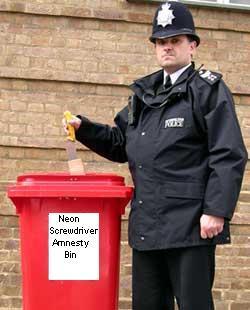Views welcome on this subject.
I have just got involved in a upgrade project and the following part of the test procedure currently in force is as follows;
1) Isolate the supply to the unit by switching off the fused spur and removing the fuse.
2) Unscrew and remove the insulated cover thus exposing the backplate and the power supply unit.
3) Test the metalwork of the backplate and power supply unit for any stray voltages using a neon screwdriver before commencing.
It is at this point I disagree with the procedure, I do not deem a neon screwdriver to be a safe and trusted method for testing for dangerous voltages but rather the use of a recognise voltage and resistance tester such as the Fluke T100 series. The T100 Series are compliant with EN 61010-1 and EN61243-3 requirements. I am struggling to find the legal situation concerning neon screwdrivers but I have the view anyway that these should be banned.
I have just got involved in a upgrade project and the following part of the test procedure currently in force is as follows;
1) Isolate the supply to the unit by switching off the fused spur and removing the fuse.
2) Unscrew and remove the insulated cover thus exposing the backplate and the power supply unit.
3) Test the metalwork of the backplate and power supply unit for any stray voltages using a neon screwdriver before commencing.
It is at this point I disagree with the procedure, I do not deem a neon screwdriver to be a safe and trusted method for testing for dangerous voltages but rather the use of a recognise voltage and resistance tester such as the Fluke T100 series. The T100 Series are compliant with EN 61010-1 and EN61243-3 requirements. I am struggling to find the legal situation concerning neon screwdrivers but I have the view anyway that these should be banned.




